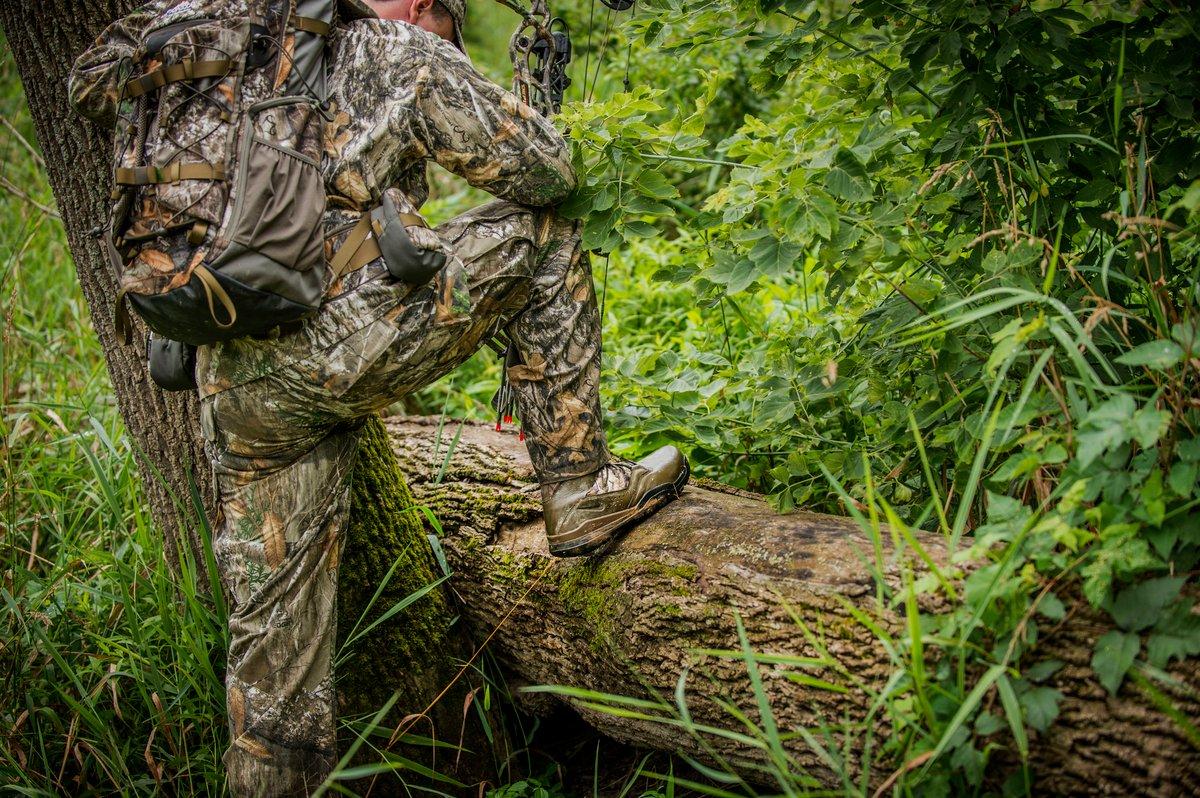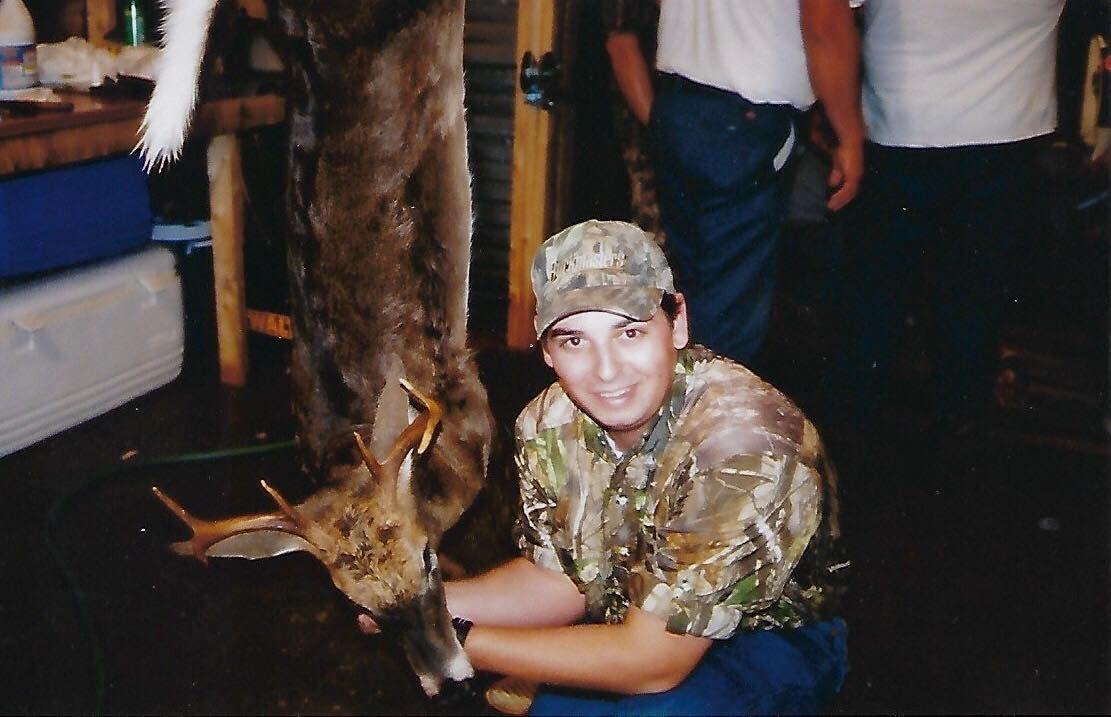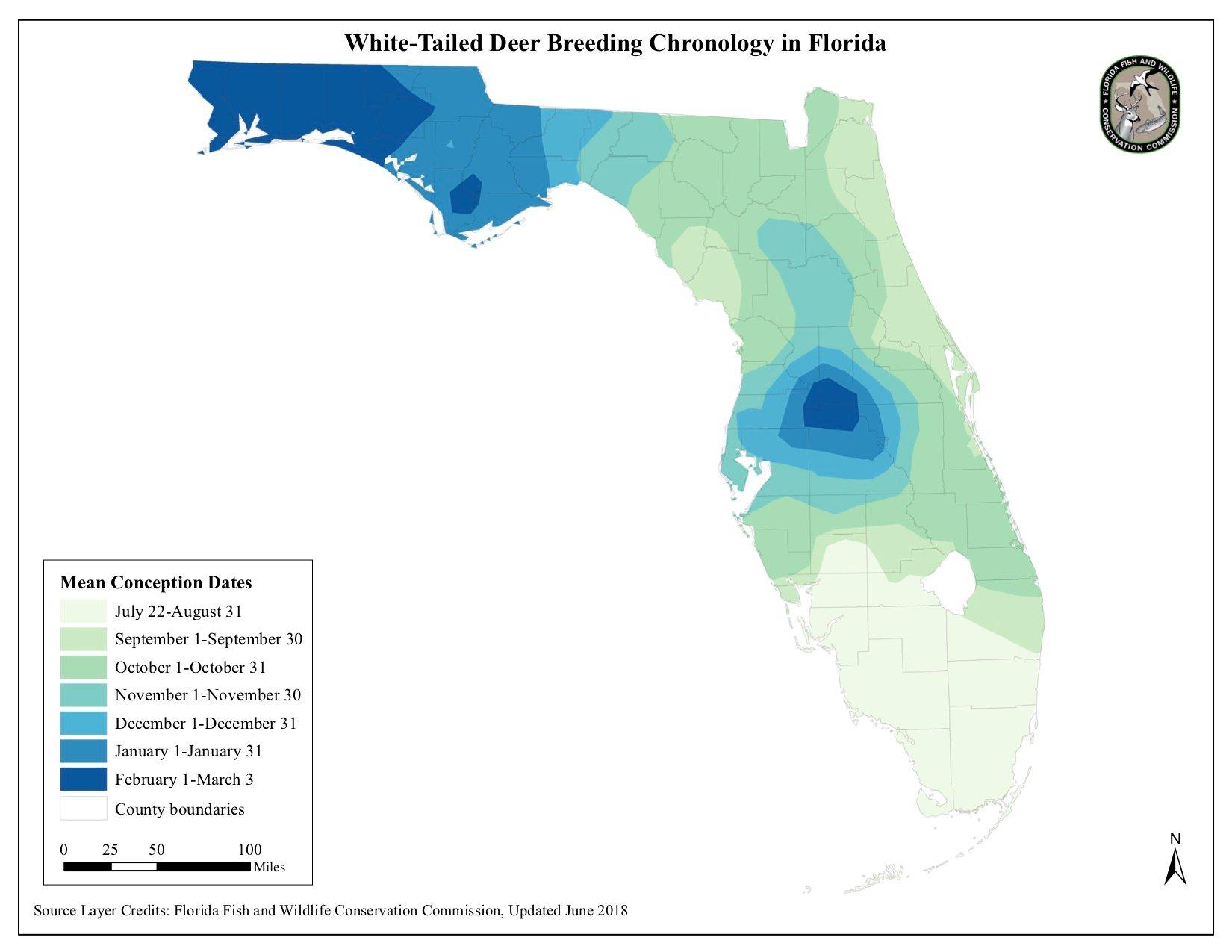In the Sunshine State, you can catch some UV rays, ride a wave, build a sand castle, and kill a rutting buck all in the same summer day
A 110-inch buck crashes down the shoreline, kicking seawater into the air as it pursues a promiscuous doe. It's like a scene straight out of Baywatch. You watch the fun from the stand, Hoyt bow in one hand, strawberry daiquiri (virgin of course) in the other. And a pair of Realtree EDGE Crocs to cover those disgusting, hairy feet. In Florida, a buck of that size is a good one for sure.
Florida is the only state in the country where you can chase rutting whitetails from July to March, location depending. It isn't a statewide, nine-month rut, of course, but it's compact enough to see from one location to the next.
I know of multiple ruts in Florida, said Realtree Pro Staffer and Backwoods Life Co-Host Kevin Knighton. In southern Florida, they rut as early as July and August, while out in the western Panhandle, it could be as late as February. Here in the area where I grew up — the north central part of the state — our rut starts in October, trickling into November. The ruts actually last a short time like any other state; they're just separated into multiple, distinct, diverse areas.
Knighton lives in Florida and knows the deer hunting well. Like most hunters, being involved is important to him.
Thankfully, the FWC [Florida Fish and Wildlife Conservation Commission] recognizes these differences and has the state separated into various DMUs to control season dates accordingly, Knighton continued. It's crazy to think about deer hunting in the southern zone in August and hunting various areas of the state all the way until March.
Talk about chasing the rut. Florida might just be the best place to do it, most things considered. But why is the rut so diverse here? Tammy Sapp, communications director for the FWC, explains.
In the southeastern states, the rut is typically not as synchronized as it is in northern states, she said. However, Florida is the only state where peak rut dates can vary from July to February. This is partly due to the long growing season and mild winters, which allow fawning to occur almost year-round. In southern Florida, the timing of the rut is driven partly by hydrology. Breeding occurs in late summer (July to September) so that fawns are born when water levels are lower (February to March).
The FWC has been collecting biological data since 2009 to estimate the breeding dates for deer across the state, Sapp said. These data have been used to inform management decisions regarding hunting season dates and location of zonal lines. In addition, the data provides local information on peak breeding, something that is of interest to whitetail enthusiasts.
Something else of interest? Size. While it's completely feasible to kill a nice buck, Florida isn't the place to hunt for a Booner. It only has two of them, both non-typicals, in the record books. But Pope and Young entries are on the rise. Solid 125- to 130-inch deer can be found with regularity in areas with better habitat, genetics and age structure.
Hunting tactics for Florida deer aren't much different than for any other deer. Hunting the rut is like any other state, Knighton said. I personally don't slam 150-inch sheds together and try rattling in deer, but I do stay vocal on a grunt call. Also, like anywhere else, food sources where does are hanging out are great places to start looking for those cruising bucks.
Temperature is less of a factor here for daylight rutting activity, too.
Hot weather doesn't seem to shut deer movement down like it does other parts of the country, Knighton said. Our deer don't have to prep for intense sub-freezing temps, so they don't seem to have the super-thick coats that northern deer do. Think of putting on the heaviest coat versus a lightweight hoodie. With the heavy coat, you're not going to run around outside for very long. Here, especially in the southern zone, deer could be rutting when temps are well into the 90s.
Again, Crocs and virgin daiquiris. Maybe a bow, arrow and broadhead. That's the essential gear list for killing big Florida bucks. If this prospect gives you all the feels, check out the 2019 season dates (antlered only) below. Then learn even more information about Florida deer hunting, courtesy of Antler Nation.
Note: zone seasons and dates do not apply to wildlife management areas or other land managed by the state game commission. Even within the zone parameters there are variances. Antlered, antlerless and weapon-specific regulations are factors. Additional regulations may apply. These are the dates set when published, but please check FWC's website to confirm.
Zone A: Archery season is Aug. 3 to Sept. 1, and crossbow season runs Aug. 3 to Sept. 6. Muzzleloader season is Sept. 7 to 20, and general gun season is Sept. 21 to Oct. 20 and Nov. 23 to Jan. 5. Youth weekend is Sept. 14-15.
Zone B: Archery season runs Oct. 19 to Nov. 17. Crossbow season is Oct. 19 to Nov. 22. Muzzleloader season is Nov. 23 to Dec. 6, and general gun season is Dec. 7 to Feb. 23. Youth weekend is Nov. 30 to Dec. 1.
Zone C: Archery season is Sept. 14 to Oct. 13. Crossbow season runs Sept. 14 to Oct. 18. Muzzleloader season is Oct. 19 to Nov. 1, and general gun season is Nov. 2 to Jan. 19. Youth weekend is Oct. 26-27.
Zone D: Archery season runs Oct. 26 to Nov. 27. Crossbow season is Oct. 26 to Nov. 27 and Dec. 2-6. Muzzleloader season is Dec. 7-13 and Feb. 24 to March 1. General gun season is Nov. 28 to Dec. 1 and Dec. 14 to Feb. 23. Youth weekend is Dec. 7-8.
Don't Miss: The Triangle of Death: Anthrax Outbreak Hits Southern Deer Herds
Check out more stories, videos and educational how-to's on deer hunting.










